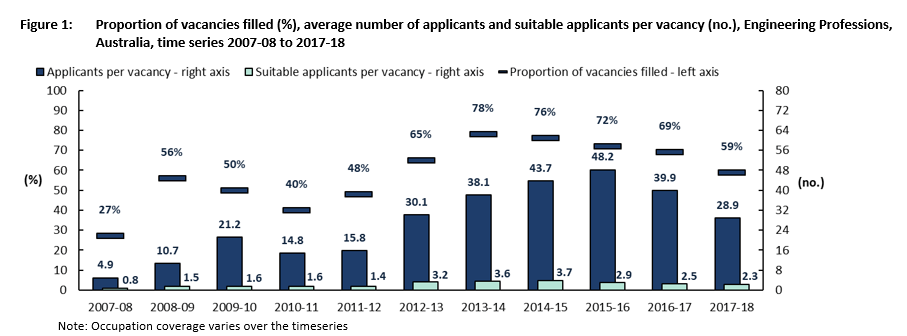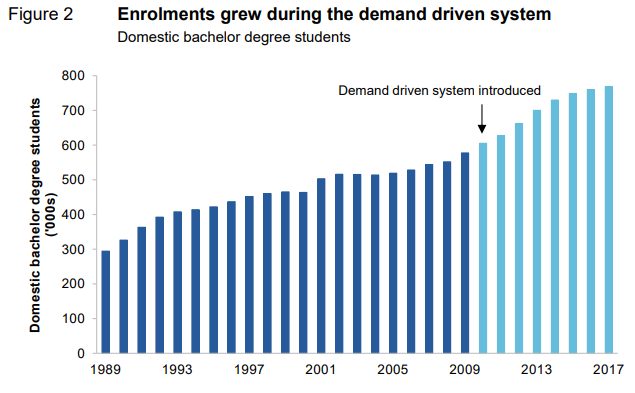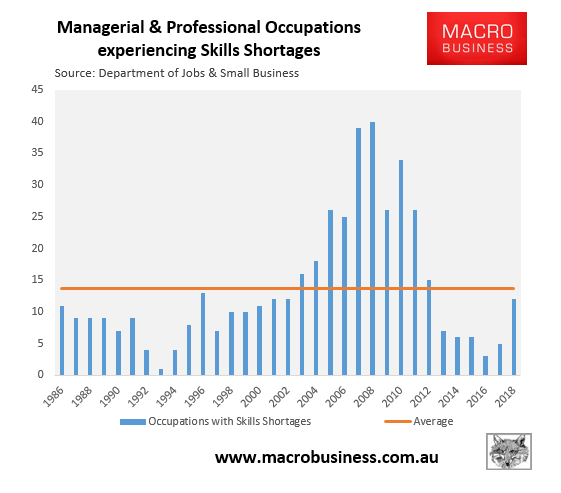Yesterday, the Morrison Government announced an “overhaul” of Australia’s skilled-migration occupation lists to drive economic growth and meet increasing demand for foreign workers in certain sectors. From SBS News:
Employment and Skills Minister Michaelia Cash announced the review in response to concerns the current list of about 500 jobs does not reflect the demand for skilled overseas workers in some sectors.
“We have heard these concerns and are committed to ensuring there are no barriers to Australia’s continued economic growth,” Senator Cash said…
“Skilled migration has always been a part of this country’s prosperity, but we need to ensure we are getting the right skilled migrants filling the skills shortages”…
The review will examine jobs on three separate lists covering temporary skilled workers, medium-long term stays and regional occupations…
Consultation with stakeholders is underway and the occupation lists are expected to be updated in March next year.
Meeting the skills needs of the Australian economy has never been the focus of the skilled migration program, nor the priority of the Coalition Government. Rather, the Coalition’s aim has been to bring as many people into the country as possible to inflate GDP growth and the federal budget.
The fact that most skilled migrants end up in low-skilled jobs has been demonstrated time and again, but also ignored.
Every year the federal government conducts a review of the skilled occupation list (SOL) with public consultation. And every year, the public is ignored in favour of ‘key stakeholders’ (read ‘vested interests’ in the business lobby), who get their way every time.
The SOL has no requirement that the occupations are actually experiencing skills shortages, only that they may some time in the distant future. This means that visas can be used by employers who wish to access foreign labour for an ulterior motive, such as to lower wage costs and avoid training.
This helps to explain why the labour markets for occupations like engineers, accountants and ICT professionals have been swamped. The Government never takes into account the conflicts of interest of the ‘key stakeholders’ begging for more migrants under the ruse of ‘skills shortages’.
For example, Engineers Australia earns millions of dollars each year doing skills assessments for migrant engineers, and always argues for more engineering migration. In 2015-16, there were 48 applicant for every engineering vacancy (see next chart), the highest number for any profession or trade ever recorded by the Department of Employment. But still Engineers Australia petitioned the government to keep all engineering occupations on the skilled migration occupation lists, to which the Government obliged:

The same goes for accountants. In 2014, controversy arose after it was revealed that the Abbott Government had chosen to keep accountants on a list of in-demand occupations for skilled migrants. This decision went against both the Department of Employment’s and the Australian Workforce and Productivity Agency’s (AWPA) recommendations to remove accounting from this list due to significant labour surpluses and “deteriorating outcomes for graduates . . . relatively low pay rates for bachelor graduates and weak employment outcomes for masters graduates”.
By keeping accounting on the skilled occupation list, qualified foreign workers are permitted to apply for a permanent visa into Australia without a sponsor.
Since then, accountants have dominated Australia’s skilled migration intake. In 2017-18, accountants were the biggest single source of permanent skilled migrants, with 3,505 visas granted. Accountants were also the tenth biggest source of temporary skilled migrants, with 1,730 primary visa holders in Australia in 2017-18.
The strong inflow of accountants under Australia’s skilled migration program is curious given the last time Accountants or External Auditor were deemed by the Department of Jobs and Small Business to have been in shortage was 2008.
In fact, according to the Department’s 2017-18 skills shortage report, “employers attracted an average of 14.6 qualified applicants per vacancy” for accounting positions. However, because employers preferred candidates with two or more years of experience, “a large proportion of these applicants were considered to be unsuitable”.
You’ve got to wonder about a country that perpetually has labour “shortages” regardless of the economic circumstances.
How can Australia be experiencing chronic skills shortages in professional jobs when our universities are pumping out more graduates than ever and wage growth is anaemic?

The answer is simple: there are no chronic skills shortages. The Department of Jobs & Small Business’ official skills shortage list debunks this lie, with shortages in 2018 running at below average levels:

It would be nice to see the Australian Government and journalists actually look at the official government data. They would quickly discover that there are minimal, if any, skills shortages in the areas where Australia is importing ‘skilled’ workers.
Of course, the Coalition turns a blind eye to these facts and has essentially let skilled migration become the employers’ weapon of choice against the Australian workforce to keep wages low. It’s all about cheap labour for its ‘growth lobby’ backers.
We know this because the actual pay levels of ‘skilled’ migrants in Australia is abysmally low.
According to the ABS’ most recent Personal Income of Migrants survey, the median employee income of migrants under the skilled stream was just $55,443 in 2013-14.
In a similar vein, separate ABS data revealed that Temporary Work (Skilled) visa holders earned a median income of only $59,436 in 2016.
And across all skilled visa categories, the median full-time salary 18 months after being granted the visa was $72,000 in 2016, which was below the population average of $72,900 (comprising both skilled and unskilled workers), according to the Department of Home Affairs.
Allowing the mass importation of foreign workers circumvents the ordinary functioning of the labour market by enabling employers to source cheap foreign workers in lieu of raising wages, as well as abrogating the need for training.
So, rather than easing access, the government should place a minimum salary floor of $100,000 on each skilled visa, both temporary and permanent. This would ensure that the skilled migration program is used only for genuinely high skilled workers that Australia cannot foster domestically, rather than be used by employers as a general labour market tool to undercut local workers and reduce wage costs.
Australia’s weak wage growth won’t recover otherwise.

